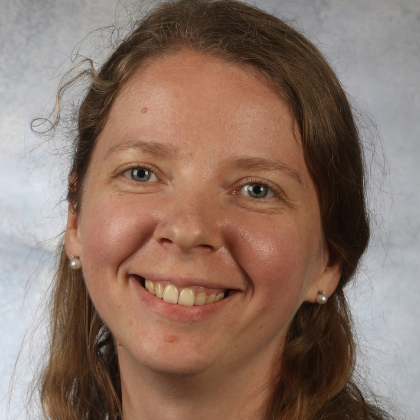
Oksana Bihun
Work place: Department of Mathematics, University of Colorado, Colorado Springs, 80918, USA
E-mail: obihun@uccs.edu
Website: https://scholar.google.com/citations?hl=en&user=Vm1F8mwAAAAJ&view_op=list_works&sortby=pubdate
Research Interests: Computational Mathematics, Mathematics of Computing, Discrete Mathematics, Mathematics
Biography
Oksana Bihun is an Associate Professor at the Department of Mathematics of the University of Colorado, Colorado Springs, USA. She graduated from Ivan Franko National University of Lviv, Ukraine, in 2001 with a major in applied mathematics. Bihun received her Ph.D. in Mathematics from the University of Missouri, Columbia, USA, in 2009. Her research interests include integrable and solvable dynamical systems and their structures, orthogonal polynomials and special functions, numerical methods for solving differential equations and geometric analysis on manifolds. To date, Bihun’s publication record consists of 28 papers in peer reviewed scientific journals, 23 abstracts or conference proceedings and 1 book chapter. E-mail: obihun@uccs.edu.
Author Articles
Structural Transformations of Incoming Signal by a Single Nonlinear Oscillatory Neuron or by an Artificial Nonlinear Neural Network
By Roman Peleshchak Vasyl Lytvyn Oksana Bihun Ivan Peleshchak
DOI: https://doi.org/10.5815/ijisa.2019.08.01, Pub. Date: 8 Aug. 2019
Structural transformations of incoming informational signal by a single nonlinear oscillatory neuron or an artificial nonlinear neural network are investigated. The neurons are modeled as threshold devices so that the artificial nonlinear neural network under consideration are systems of nonlinear van der Pol type oscillatory neurons. The neurons are coupled by synaptic weight coefficients to endow the systems with the configuration topology of a chain or a ring. It is shown that the morphology of the outgoing signal – with respect to the shape, amplitude and time dependence of the instantaneous frequency of the signal – at the output of such a neural network has a higher degree of stochasticity than the morphology of the signal at the output of a single neuron. We conclude that the process of coding by a single neuron or an entire chain-like or circular neural network may be considered in terms of frequency modulations, which are known in Physics as a way to transmit information. We conjecture that frequency modulations constitute one of the ways of coding of information by the neurons in these types of neural networks.
[...] Read more.Other Articles
Subscribe to receive issue release notifications and newsletters from MECS Press journals